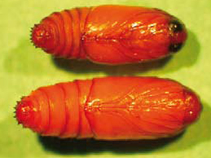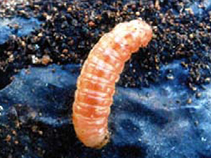 The False Codling Moth (Thaumatotibia leucotreta or FCM) is a threat to many of our flowers fruits, vegetables and other crops. Increased international trade and tourism has increased the risk of introduction of this pest. False Codling Moth can survive in climates described as tropical, dry or temperate. It is estimated that approximately 50 percent of the global environment may be suitable habitat for FCM.
The False Codling Moth (Thaumatotibia leucotreta or FCM) is a threat to many of our flowers fruits, vegetables and other crops. Increased international trade and tourism has increased the risk of introduction of this pest. False Codling Moth can survive in climates described as tropical, dry or temperate. It is estimated that approximately 50 percent of the global environment may be suitable habitat for FCM.
What is it
False codling moth is native to Ethiopia and sub-Saharan Africa. It is not known to be established in many parts of the world. Main routes of introduction are larvae on fruits, pods, or flowers. There are more than 70 potential hosts. The time for development is highly temperature defendant with up to five generations per year.
A female moth can lay up to 400 flattened-oval, pin-head sized eggs, usually placed singly. Young caterpillars are yellowishwhite with dark spots. Larvae can grow to be 1/2 inch in length and are bright red or pink with a yellow-brown head. On citrus, young larvae mine into the fruit, causing premature ripening.
External indications may be seen as scarring on the fruit. On cotton it first mines the boll wall, but later transfers to the seeds. This feeding habit leaves few indications of the feeding being done inside the seeds. When mature, the larva descends to the ground on a silken thread and spins a tough silken cocoon in the soil and duff.
Males and female adults have distinctly different patterns. The wingspan ranges from 1/2 to 3/4 of an inch. Both genders have patterns on the forewing of grey, brown,

black and orange-brown markings. The male’s hindwing is slightly reduced with a circular pocket of fine, hairlike black scales overlaid and broad, whitish scales in the anal angle.
What is the risk?
The false codling moth feeds on more than 100 host plants, flowers, vegetables, fruit trees, field crops and other plants. Host plants.
Source of the Threat
- Fresh produce
- Nursery stock
- Biodegradable waste from plants and plant product
- Conveyances such as trucks and other vessels
Signs and Symptoms
Visible caterpillars: whitish and spotted, while mature ones are pinkish and 0.6 (or 3/5) inches in length.
Visible adult moths: small, brownish-gray, nocturnal moths with an average wingspan of 0.6 (or 3/5) inches.
Visible eggs on flowers, fruit and vegetables: whitish, flat and oval
What You Can Do
Do not export fresh produce unless KEPHIS or other government inspectors have cleared them first if you have any doubts.
- Never remove fresh produce from your farm if your area is under False Codling Moth quarantine.
- Cooperate with all quarantine restrictions or rules that might be imposed.
- Allow authorized KEPHIS or other government inspectors access to your farm to install and inspect insect-monitoring traps.
- Know the quarantines in your area and learn to leave Hungry Pests behind.


